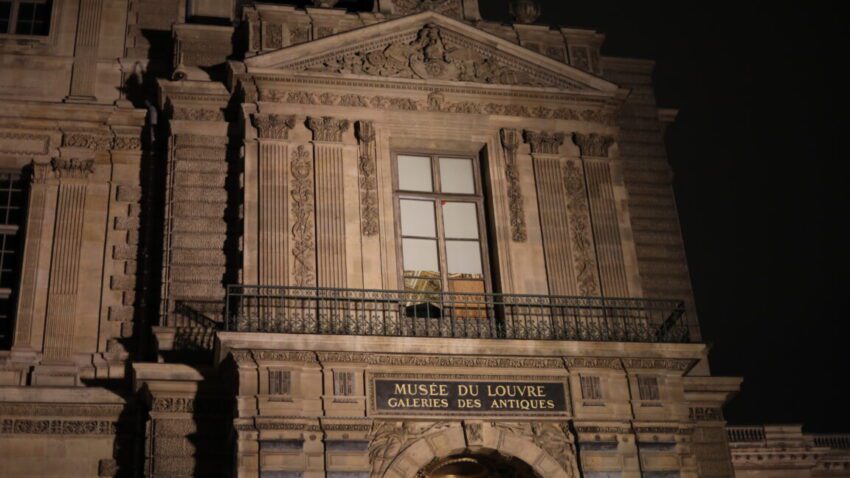
how louvre thieves exploited human psychology to On a sunny morning on October 19, 2025, four men allegedly walked into the world’s most-visited museum and left, minutes later, with crown jewels worth 88 million euros ($101 million). The theft from Paris’ Louvre Museum—one of the world’s most surveilled cultural institutions—took just under eight minutes.
how louvre thieves exploited human psychology to
The Heist: A Masterclass in Deception
Visitors kept browsing. Security didn’t react until alarms were triggered. The men disappeared into the city’s traffic before anyone realized what had happened. This brazen theft has raised questions not only about security measures but also about the underlying psychology that allowed such a heist to occur in broad daylight.
Investigators later revealed that the thieves wore hi-vis vests, disguising themselves as construction workers. They arrived with a furniture lift, a common sight in Paris’s narrow streets, and used it to reach a balcony overlooking the Seine. Dressed as workers, they looked as if they belonged. This strategy worked because we don’t see the world objectively; we see it through categories—through what we expect to see.
Exploiting Human Psychology
The thieves understood the social categories that we perceive as “normal” and exploited them to avoid suspicion. This aligns with the sociologist Erving Goffman’s concept of the presentation of self, where individuals “perform” social roles by adopting cues that others expect. In this case, the performance of normality became the perfect camouflage for their illicit activities.
Human perception is inherently biased, shaped by cultural norms and societal expectations. When something fits the category of “ordinary,” it slips from notice. This phenomenon is not just a quirk of human behavior; it has significant implications for security and surveillance systems.
The Sociology of Sight
Humans carry out mental categorization all the time to make sense of people and places. This cognitive process allows us to navigate complex social environments quickly. However, it also creates blind spots. AI systems used for tasks such as facial recognition and detecting suspicious activity in public areas operate in a similar way. For humans, categorization is cultural; for AI, it is mathematical.
Both systems rely on learned patterns rather than objective reality. Because AI learns from data about who looks “normal” and who looks “suspicious,” it absorbs the categories embedded in its training data. This makes it susceptible to bias, mirroring the same social categories that humans use.
Bias in AI: A Double-Edged Sword
The Louvre robbers weren’t seen as dangerous because they fit a trusted category. In contrast, AI systems may flag individuals who don’t conform to statistical norms as suspicious. This can lead to disproportionate scrutiny of certain racial or gendered groups while allowing others to pass unnoticed.
A sociological lens helps us see that these aren’t separate issues. AI doesn’t invent its categories; it learns ours. When a computer vision system is trained on security footage where “normal” is defined by particular bodies, clothing, or behavior, it reproduces those assumptions. Just as the museum’s guards looked past the thieves because they appeared to belong, AI can overlook certain patterns while overreacting to others.
The Implications of Categorization
Categorization, whether human or algorithmic, is a double-edged sword. It helps us process information quickly, but it also encodes our cultural assumptions. Both people and machines rely on pattern recognition, which is an efficient but imperfect strategy. The consequences of these blind spots can be severe, particularly in high-stakes environments like security.
A sociological view of AI treats algorithms as mirrors: they reflect back our social categories and hierarchies. In the Louvre case, the mirror is turned toward us. The robbers succeeded not because they were invisible, but because they were seen through the lens of normality. In AI terms, they passed the classification test.
From Museum Halls to Machine Learning
This link between perception and categorization reveals something important about our increasingly algorithmic world. Whether it’s a guard deciding who looks suspicious or an AI determining who resembles a “shoplifter,” the underlying process is the same: assigning people to categories based on cues that feel objective but are culturally learned.
When an AI system is described as “biased,” this often means that it reflects those social categories too faithfully. The Louvre heist serves as a stark reminder that these categories don’t just shape our attitudes; they also shape what gets noticed at all.
Reactions and Future Considerations
After the theft, France’s culture minister promised new cameras and tighter security. However, no matter how advanced those systems become, they will still rely on categorization. Someone, or something, must decide what counts as “suspicious behavior.” If that decision rests on assumptions, the same blind spots will persist.
The Louvre robbery will be remembered as one of Europe’s most spectacular museum thefts. The thieves succeeded because they mastered the sociology of appearance: they understood the categories of normality and used them as tools. This incident raises critical questions about the effectiveness of current security measures and the role of human perception in safeguarding valuable assets.
Lessons for AI Development
The success of the Louvre thieves illustrates the need for a more nuanced understanding of how both humans and AI systems interpret the world. As we develop more sophisticated algorithms, it is essential to incorporate a critical examination of the data and categories we use. The lesson is clear: before we teach machines to see better, we must first learn to question how we see.
In the context of AI, this means actively working to identify and mitigate biases in training data. It also involves creating systems that can adapt to new information and contexts, rather than rigidly adhering to pre-defined categories. By doing so, we can develop AI systems that are not only more effective but also more equitable.
Conclusion
The Louvre heist serves as a cautionary tale about the interplay between human psychology and artificial intelligence. It highlights the vulnerabilities inherent in both systems when it comes to categorization and perception. As we continue to integrate AI into various aspects of society, understanding these dynamics will be crucial for creating systems that are both efficient and just.
In the end, the success of the Louvre thieves was not merely a triumph of planning but also a testament to the power of categorical thinking. Their ability to exploit societal norms and expectations underscores the importance of critically examining how we perceive the world—both as humans and as creators of technology.
Source: Original report
Was this helpful?
Last Modified: November 20, 2025 at 12:36 am
3 views















